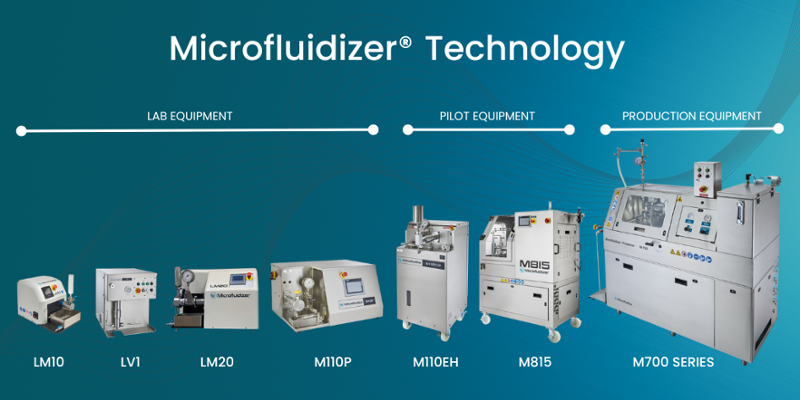Sep 8, 2022 2:57:43 PM
Microfluidics was pleased to host a joint webinar with HDT Bio., a world leader..
Our Microfluidizer® high shear processors are developed and built to support vaccine manufacturing at a production scale.
Vaccines have been vital in the fight against global pandemics and diseases. To successfully produce a vaccine for millions, a strong large-scale production method is essential, and Microfluidizer® technology provides this answer.
Vaccines have existed for over 100 years, they began as injections of similar viruses – these days native viruses are either ‘inactivated’, which are grown in chicken eggs and then killed with radiation, or ‘attenuated’ meaning that their activity has been reduced as to not infect the recipient, but the body will still recognize the intrusion and create antibodies.
The second generation uses recombinant protein-based solutions. Rather than introduce the entire virus to the patient, a protein – most commonly the spike protein - is isolated and used. Here a vaccine adjuvant is vital to enhance not only the efficacy of the vaccine but also to improve the number of dose treatments that can be manufactured from each batch.
The recent third generation vaccines utilize nucleic acid-based vectors such as DNA or RNA. It codes the protein, so the body generates the protein itself. The scale and infrastructure needed for this type of vaccine are not yet well developed. This has accelerated the need for suitable drug delivery systems. Various lipid-based nanoparticle platforms including liposomes, lipid nanoparticles (LNPs) and nanoparticle bound albumin (nab) technologies are all promising approaches.
Microfluidizer® high shear processing technology combines a fixed geometry Interaction ChamberTM and a constant pressure intensifier pump which means that the entire batch is passed through the Microfluidizer® processor at the required shear rate. This results in small particle sizes with a narrow size distribution.

Microfluidics offers benchtop, pilot and full production scale equipment that is suitable for vaccine development and production. The lab results are assured seamless scale up since the production units utilize the same size and configuration Interaction Chambers™ design as those used in the lab. With Interaction Chamber™ technology, microchannels are added in parallel to deliver scale-up.
Research has proved that the particle size distribution (PSD) achieved in the lab in batch sizes of 300mL/minute can be replicated at a production scale with volumes of 5 L/minute.
Tests have shown the technology creates best-in-class stable nanoemulsions that can be sterile filtered to avoid the need for costly aseptic processing. The technology produces oil droplet sizes of d90 <200 nm which are effective for sterile filtration. If the particles are too large, they will cause a loss of product and require more expensive filtration equipment downstream.
See why using a Microfluidizer® processor is ideal for creating sterile nanoemulsions due to its ability to create extremely small droplets in a narrow PSD, which improves stability & filtration.
See below our lastest articles on the topic of vaccine production.
Microfluidics is proud to have collaborated over the years with leading research institutes around the world.